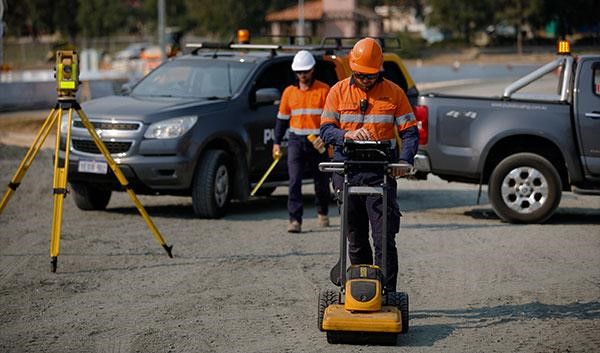The evaluation of pavements or road parameters, has several uses and 4 areas of application: pavement rehabilitation studies, quality control, pavement research and management.
When a rehabilitation study is carried out, the objective is to determine the causes of pavement failure, in order to propose the necessary corrective measures. If the analysis is carried out as part of the work quality control process activities, the purpose will be to determine if the asphalt is accepted or rejected.
On the other hand, when it comes to research, the procedure is carried out in order to study their behavior, to develop and/or calibrate empirical models of performance. In the area of management, the objective is to know the state of the pavement and to identify which are the interventions that will have to be carried out at this stage.
What are the procedures for evaluating road parameters?
With regard to the tools used in the evaluation of pavements, there are various auscultation and diagnostic equipment. It is necessary to distinguish which are of superficial evaluation and which are structural. The first type involves measuring the serviceability of the pavement, and can be done with equipment such as the bump integrator, laser profilometers, precision leveling, or other simpler ones such as the Merlin. The choice of one or the other will depend on the degree of precision required, as well as the length of the sections.
A multiple application equipment in the evaluation of pavements is the georadar or Ground Penetrating Radar (GPR). This machine consists of an antenna that is mounted on a truck, which travels the route at normal speed, and allows auscultation of the pavement at depths between 50 to 75 cm, depending on the type of antenna used. The GPR is used to determine the thickness of the pavement layers and to identify defects in the asphalt or granular base.
In the quality control area, the georadar is used to detect changes in the dialectical coefficient of the materials that make up the pavement layer. Another state-of-the-art equipment used in quality control is the Pave tracker non-nuclear densimeter, which is used to control the level of compaction on site, and does not present any risk to the operator.
Special mention should be made of the fault finding equipment that uses video cameras combined with laser technology, in an effort to automate data collection and processing.
In conclusion, it is possible to summarize the evaluation process of road parameters, in 7 steps:
- Gather prior information on the section under evaluation
- Perform Visual Inspection
- Carry out survey with GeoRadar
- do deflectometry
- Analyze results obtained from steps 1 to 4
- Carry out field surveys to take samples of the materials, and carry out laboratory tests as required
- Define the actions to be taken based on the results obtained
Content originally produced by Wise Marketing for RING.SA


